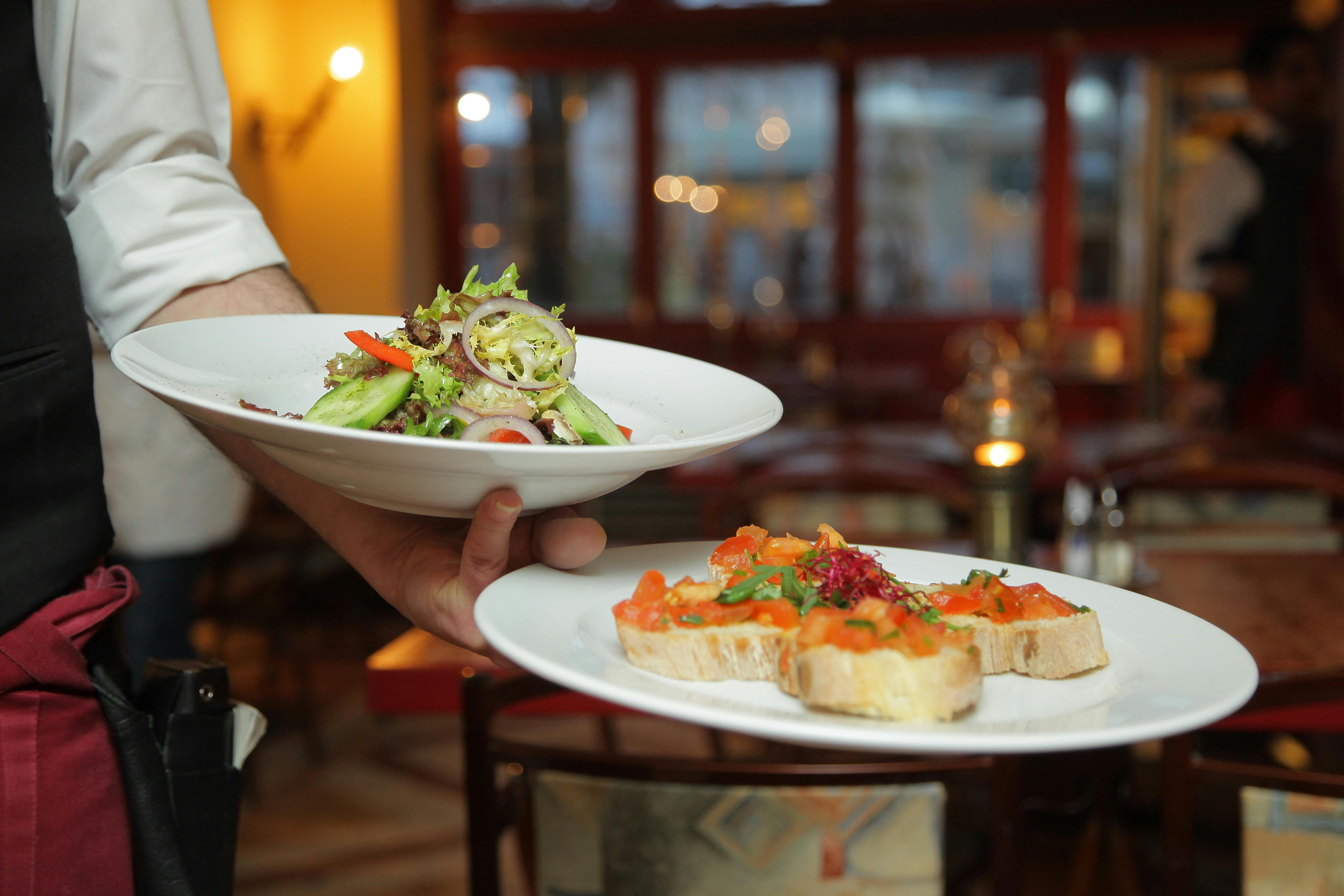Lesson: Dining Out: Ordering and Inquiring

Activity I: Vocabulary
- Reservation – An arrangement to have something (e.g., a table in a restaurant) kept for you.
- Menu – A list of dishes available in a restaurant.
- Appetizer – A small dish of food served before the main part of a meal.
- Main course (Entrée) – The principal dish of a meal.
- Dessert – A sweet course eaten at the end of a meal.
- Recommend – To suggest that someone or something would be good or suitable for a particular purpose or person.
- Dietary restrictions – Limitations on what foods a person can eat due to health, religious, or ethical reasons.
- Bill (Check) – A printed or written statement of the money owed for goods or services.
- Service charge/Tip – An extra amount of money given to someone such as a waiter for good service.
Activity II: Reading
Dining out at a restaurant is a common social activity and often a delightful experience, whether it's a casual meal or a special celebration. For intermediate English learners, effectively navigating this situation—from making a reservation to paying the bill—requires specific vocabulary and polite communication strategies. Understanding how to order food, inquire about dishes, and handle various aspects of the dining experience can significantly enhance your confidence and enjoyment when eating out in English-speaking environments.
The process often begins before you even arrive at the restaurant. For popular places or group dinners, making a reservation is advisable. You might call and say, "I'd like to make a reservation for two people for 7 PM tonight under the name [Your Name]." Upon arrival, you'll be seated and given a menu. Take your time to look through the options, which typically include appetizers, main courses (sometimes called entrées), and desserts. Don't hesitate to ask the waiter for recommendations if you're unsure what to choose: "What do you recommend?" or "What's the specialty of the house?"
When you're ready to order, you can say, "I'll have the grilled salmon, please," or "We'd like to start with the calamari appetizer." If you have any dietary restrictions or allergies, it's crucial to inform your server. For example, "I'm allergic to nuts, does this dish contain any?" or "Do you have any vegetarian options?" During the meal, if you need something, you can politely get the waiter's attention. Once you've finished eating, you'll ask for the bill (or check, particularly in American English): "Could we have the bill, please?"
Review the bill carefully to ensure it's correct. In some countries, a service charge is automatically included, while in others, it's customary to leave a tip for good service. Understanding these cultural nuances is part of the dining experience. Being able to communicate clearly and politely throughout your meal—from ordering and making inquiries to settling the payment—ensures a pleasant experience for both you and the restaurant staff. Mastering these interactions will allow you to fully enjoy dining out.
Activity III: Role Play (Ordering Dinner at a Restaurant)
Instructions: Practice this dialogue with your teacher. One person is the Customer, and the other is the Waiter.
Activity IV: Let's Practice
Role-Play Ordering a Meal with Your Teacher.
With your teacher, simulate a restaurant dining experience. Student: You are the customer. Start by asking for a table (or confirming a reservation). Look at a pretend menu (your teacher can suggest some dishes). Ask for recommendations. Order an appetizer, main course, and perhaps a drink or dessert. Inquire about ingredients if you have a (pretend) dietary restriction. Finally, ask for the bill and clarify about service charge/tipping. Teacher: You are the waiter. Greet the customer, take their order, answer questions about the menu, and present the bill. Focus on using polite language and appropriate vocabulary for dining out.